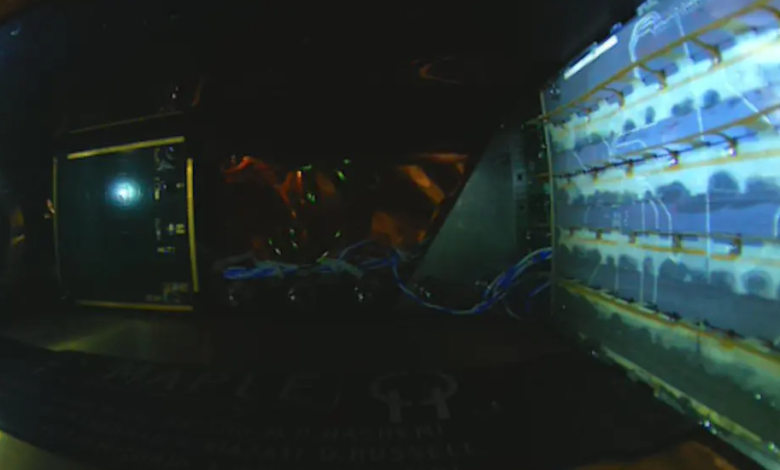Solar panels in space, wireless photovoltaic is in orbit and works

Solar panels orbiting in space, ground power transmission works
(sustainabilityenvironment.com) – The dream of creating solar panels in space that give the Earth a constant source of clean energy, becomes reality. In the international race for wireless photovoltaics, the California Institute of Technology (Caltech) has overtaken its “competitors” by launching into orbit at the beginning of the year the first space plant, a small demonstration plant to test the ability to capture solar energy, microwave transformation and sending over long distances. And today, about 5 months later, the university can rejoice: its Space Solar Power Project works.
Space photovoltaics, from science fiction to reality
The idea of bringing solar panels into space, to generate photovoltaic energy 24 hours a day, began to take shape in the late ’60s but owes its public notoriety to a science fiction story several years earlier. In 1941, in fact, Isaac Asimov published “Rational Being,” describing a world where humans collected solar energy from an orbiting station by sending it to Earth via radio waves.
Turning this concept into reality has not been easy but today more than one project is working to give Asimov’s imagination concrete outlines. Thanks to the new objectives of the energy transition, several countries and space agencies have launched into the enterprise. In June 2022, China announced that it had tested the first functioning wireless PV facility on land, with the goal of having an experimental solar power plant in orbit by 2035. The Japanese space agency would like to beat you by launching its first space photovoltaic panels in 2025.
But ESA, the European Space Agency, is also committed to funding orbiting PV projects and, in the UK, the government has commissioned research on solar power plants in space to assess their feasibility; with the possibility of having a first photovoltaic demonstration station in 2040.
How does wireless photovoltaic demonstration work?
The work of Caltech, carried out as part of the Solar Space Project, drives for now the race to the stars. The Space Solar Power Demonstrator (SSPD) took flight on January 3 aboard the Falcon 9 rocket in the SpaceX Transporter-6 mission. And a few weeks after launch, testing of the different technologies on board the SSPD began. The small demonstration platform consists of three experiments:
- DOLCE, a folding structure of about 1.8 m2 that forms the basic modular architecture on which to install solar panels. At full power several units DOLCE would constitute a sort of constellation on a kilometric scale forming a solar power plant orbinate;
- ALBA, a collection of 32 different types of solar cells that will allow scientists to evaluate the most effective type to realize future solar panels in space;
- MAPLE, an array of light and flexible microwave power transmitters. The devices are driven by custom electronic chips, built using low-cost silicon technologies.
It is precisely this last element that has made the Californian Institute rejoice. MAPLE was developed by a Caltech team led by Professor Ali Hajimiri. “Through the experiments we have run so far, we received confirmation that MAPLE can transmit power successfully to receivers in space,” Hajimiri says. “We have also been able to program the array to direct its energy toward Earth, which we detected here at Caltech. We had, of course, tested it on Earth, but now we know that it can survive the trip to space and operate there.”
The success of MAPLE
Using constructive and destructive interference between individual transmitters, the system was able to shift the focus and direction of the emitted energy, without any moving parts. And thanks to precise control elements can dynamically target the power selectively to the desired position. “To the best of our knowledge, no one has ever demonstrated wireless energy transfer in space even with expensive rigid structures. We are doing it with flexible lightweight structures and with our own integrated circuits. This is a first,” says Hajimiri.
Read also Nanoracks’ new space waste disposal solutions
The transmitted energy was detected by a receiver on the roof of the Gordon and Betty Moore Laboratory of Engineering on the Caltech campus in Pasadena. The received signal appeared at the scheduled time and frequency.
Solar panels in space, the secret is flexibility
“Demonstration of wireless power transfer in space using lightweight structures is an important step toward space solar power and broad access to it globally,” says Harry Atwater, Otis Booth Leadership Chair of Division of Engineering and Applied Science. “Solar panels already are used in space to power the International Space Station, for example, but to launch and deploy large enough arrays to provide power to Earth, SSPP has to design and create solar power energy transfer systems that are ultra-lightweight, cheap, and flexible.”
The individual units are designed to be enclosed in packages of about 1 cubic meter of volume, able to open into orbit in flat squares of about 50 meters per side, with solar cells on one side facing the sun and wireless power transmitters on the other side facing the Earth.





